This post may contain affiliate links. If you click through a link and make a purchase, I may receive a commission at no additional cost to you. As an Amazon Associate, I earn from qualifying purchases. Read the full disclosure here.
Do you you always get hurt exercising?
Are you confident with exercise modifications if they’re not provided for you?
Do you ignore modifications and view them as a phone-it-in moment?
If you’re not using exercise modifications to your advantage, you’re seriously missing out. Exercise modifications are your new best friend. Modifications allow you to tailor a workout to you, not forcing yourself to fit into a workout.
Every person is different and has different anatomy, injuries, and fitness levels.
Smart modifications can mean the difference between always being injured and a consistent healthy fitness program.
You’ll walk away from this article with a new confidence to make any workout routine work for you with these easy tips to modify any exercise.
Disclaimer: This content is for educational purposes and is not medical advice. Read the full disclaimer.
What is an exercise modification?
Exercise modifications are adjusting variables and decreasing complexity to work with your body. It’s essentially an exercise variation that fits better for your body and fitness level.
The more complex the activity, the more moving parts, the more muscles and joints involved, and the more you have to monitor and keep track of.
Modifications are sometimes associated with a negative connotation that they’re “easy” or you’re showing weakness by modifying movements. In reality, variations can actually make movements harder and give your body options that work better for you.
A classic example is push-ups. Push-ups are extremely difficult for some people and some of it just comes down to the proportions of your body, similar to how Michael Phelps’ wingspan helps him be an extraordinary swimmer. Some people will just have an easier time with push-ups.
If I can hardly move through any range of motion trying a push-up on my toes, my arms aren’t really getting that much benefit. But, if I drop to my knees and now I’m able to lower my upper body more, my arms are actually getting a workout. In this case, knee push-ups are providing me with better strengthening.
Why is exercise modification important?
Modifications aren’t just for beginners, slackers, older people, or those with injuries. Exercise modifications can help remove barriers and make workouts more accessible.
You can adapt your workout to fit your body instead of the other way around.
Have you ever heard the phrase “work smarter not harder?”
If you’re constantly hurting yourself when you’re working out because you’re not listening to your body, you won’t be able to keep up with fitness for very long.
That’s a red flag that something(s) you’re doing isn’t working for you.
If you’d like to be a healthy and active 40/60/80 year-old, you will need to think about how you can stay active and healthy for more than just today.
Take your ego out of the equation by thinking you have to be at a certain level. Instead, listen to your body and be honest with yourself.
We get so caught up in what other people will think of us. If you’re in a group fitness class, be a good example, and maybe your modification will inspire someone else to take one and avoid injury as well.
Your level can be fluid. How do you feel today? There are a lot of ups and downs along a fitness journey. Be prepared to adapt your workouts to avoid injuries.
When to modify exercises
If you have a current injury or health condition
Some common conditions requiring modifications include:
- Cardiac Conditions
- Asthma or other conditions that affect breathing
- Pregnancy/post-partum
- Osteoporosis
- Arthritis
- Recovering from an injury
Necessary modifications will vary based on conditions.
This is not a complete list, so speak with your health care providers and learn what you should and shouldn’t do for fitness activities.
Modifications are unique to your condition or needs, so be sure to do your research based on what YOU need.
To decrease intensity
Perceived intensity varies from person to person.
You can always control how hard you’re working. Get in tune with your body and check in with intensity either using a heart rate monitor or 0-10 scale.
Read The Ultimate Guide to Fitness Trackers for more information on intensity and how to get the most out of your fitness tracker.
To decrease impact
Jumping and pounding can take a toll on the body over time, especially if you have knee pain or other injuries. Look for alternatives to jumping if this is an area that affects you.
Taking out jumping is always an option, for example instead of squat jumps, just squat in place.
Read: 18 Low Impact Workout Options to Keep You Moving
If it just doesn’t feel right
Sometimes, things just don’t feel right.
Stop yourself before an injury happens. At the very least, this could be a cue to check in with your form.
So often people think a move is bad for them because it doesn’t feel right.
In reality, the root of the problem could be poor form. Seek out proper instruction and modification options before you swear it off forever.
I’m just not into this today
But I showed up, so I’m going to meet halfway instead of doing nothing at all. This happens from time to time, even in those who love to exercise.
If it’s happening all the time, probably best to have a chat with yourself and maybe revisit your goals.
Check out 7 Tips for Staying Consistent with Exercise.
Limited strength or flexibility
Everyone has to start somewhere and there’s no shame. Exercise modifications are a wonderful option to meet you where you are. Building the basics are essential to avoiding injury as you progress.
Learn your limits and how to progress smartly to avoid overdoing it.
You’re not injured but you’re managing an issue
Maybe X injury doesn’t bother you today but flares up intermittently.
Learn what sets you off so you can avoid that.
And if you know when you perform Y you’ll be in pain for several days or weeks, don’t do that!
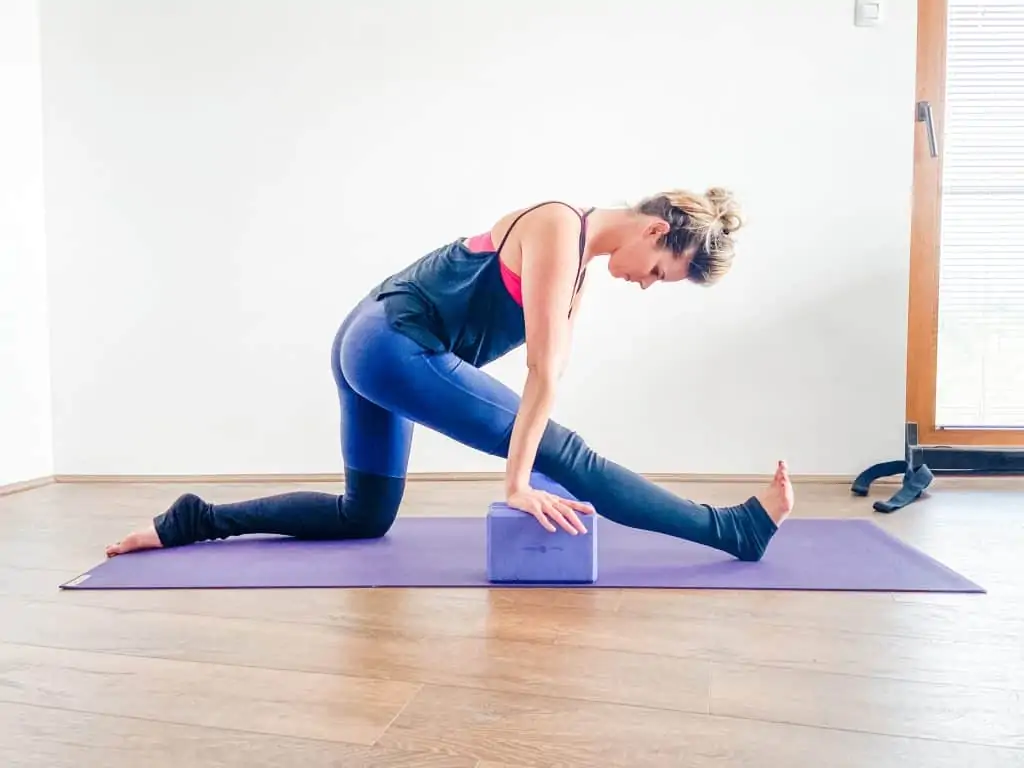
How to modify exercises
Decrease the intensity or impact
Avoid jumping activities.
Take squat jumps for example. If jumping isn’t for you, just squat in place.
If squatting is difficult, modify the range and do what your body allows, without paying for it later.
Decrease the range of motion
This can be applied to any movement for your own personal comfort.
An example is not to squat or lunge so deeply. Move in a challenging but non-painful range.
Can you still do the movement and control/coordinate what you’re doing?
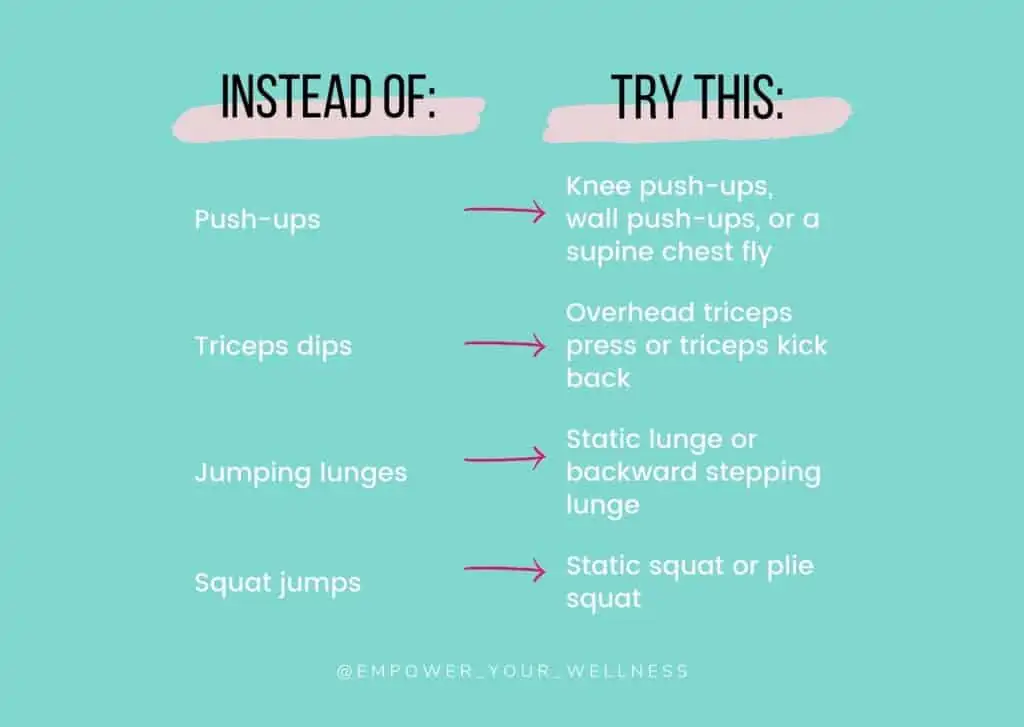
Adjust your angle
When you change the angle of an exercise, it can make it easier or more difficult.
Example: push-ups.
It can be challenging to do a regular push up. Gravity feels real heavy real quick. Dropping down to your knees changes your center of gravity and can help to improve form and focus on arm strengthening.
Doing a wall push up further modifies this move and is a great option when dealing with shoulder or wrist issues.
Use props
This is most common in yoga classes.
Using props like blocks, straps, blankets, and bolsters can improve form and ease discomfort by supporting you in various poses.
Think of props as a way to enhance your practice, not as a limiting factor.
Yoga blocks are great for bringing the floor up to you.
Straps can assist with stretching by extending your limbs without compromising form.
Blankets can pad and cushion, for example, knees during kneeling positions.
Bolsters are great for support in various positions, particularly in slower-paced classes.
Read How to Use Yoga Blocks to Prevent Injury for more ways to incorporate blocks into your practice.
Decrease the weight
If you can’t complete the exercise with proper form, decrease your weight. Pain or using momentum to complete an exercise can be a signal that something needs to change.
In general, you should be able to complete 8-12 reps with good form, feeling fatigued near the end of the set.
The answer may be bodyweight only until you are confident in your form.
Decrease the number of repetitions
Or change the ratio of sets/reps. Quality over quantity!
If your goal was 10, and 5 were fabulous, but 5 were sloppy…
Guess what? Sloppy form is only good for reinforcing bad habits and getting hurt.
Slow down
Focus on what you’re doing! Mindfulness is thrown around a lot these days, but it’s important to focus on the task at hand with intention.
Don’t be thinking about your grocery list or the person next to you.
More exercise modification tips
Ask for what your need
Don’t be afraid to ASK for modifications. If you don’t ask, you don’t get.
Make sure to see the instructor before a class or tell your trainer what issues you’re having and that you’ll need modifications.
It’s not your job to know all modifications, but it is your job to speak up and let someone know you’re looking for them and what your concerns are.
No one will magically read your mind. Don’t be afraid to ask questions and advocate for yourself.
Research your own modification options
Do some of your own research into exercise modifications for you. If you have any specific injuries, make sure you take the time to understand your condition. This can better help you to work around any issues.
The one you need may not always be provided. Be prepared.
Substitute with the same goal in mind
When modifying strength moves, identify the purpose of the exercise to supplement with an alternative exercise targeting the same goal.
For example, jogging in place isn’t a substitute for push-ups, but wall push-ups are.
Never sacrifice one body part for another
Something I see all the time is those with limited shoulder mobility, trying to perform an overhead triceps press, accompanied by a painful grimace and terrible form.
That poor rotator cuff.
If only they knew that a triceps extension with a hip hinge would be a great option to target the triceps AND keep those poor shoulders healthy.
Easy cardio swaps
Substitutions for cardio exercises can be less challenging as the goal is really just to keep your heart rate up.
So if jumping jacks don’t appeal to you, maybe marching high knees in place does. Walk it out, just keep moving.
Do what works for you
If you’re taking a class and you’re the only one modifying, good for you! You’re listening to your body and understand how to keep yourself safe. Chances are others probably should be modifying.
Don’t feel you have to do the exact same thing the instructor or others are doing.
Feel free to take a modification. The worst thing is performing movements incorrectly and risking injury.
Wrapping up
Ultimately, you’re the one who’s responsible for monitoring how you feel.
It’s a good idea to understand modifications that work for your exercise routine.
Have some options in your back pocket to seamlessly sprinkle in on the fly. You can’t always guarantee they’ll be provided.
Still stuck on how to work around injuries? Go see a physical therapist!
A few small tweaks can make all the difference and make movements and options more accessible.
These tips give you the tools to tailor any movement to your needs.
There’s a difference between challenging yourself smartly by listening to your body and risking injury.
Exercise modifications are the key to maximizing your fitness today and make sure you’re still healthy to do it tomorrow and years to come.
Related articles:
- Improve Your Body Awareness for Injury Prevention
- Mobility vs Stability vs Flexibility – How to Unlock Healthy Movement
- Yoga for Hamstrings – Easy Ways to Protect & Prevent Injury
- How To Exercise with Lower Back Pain (Safely)
Featured image credit: Copyright Pixelrockstar


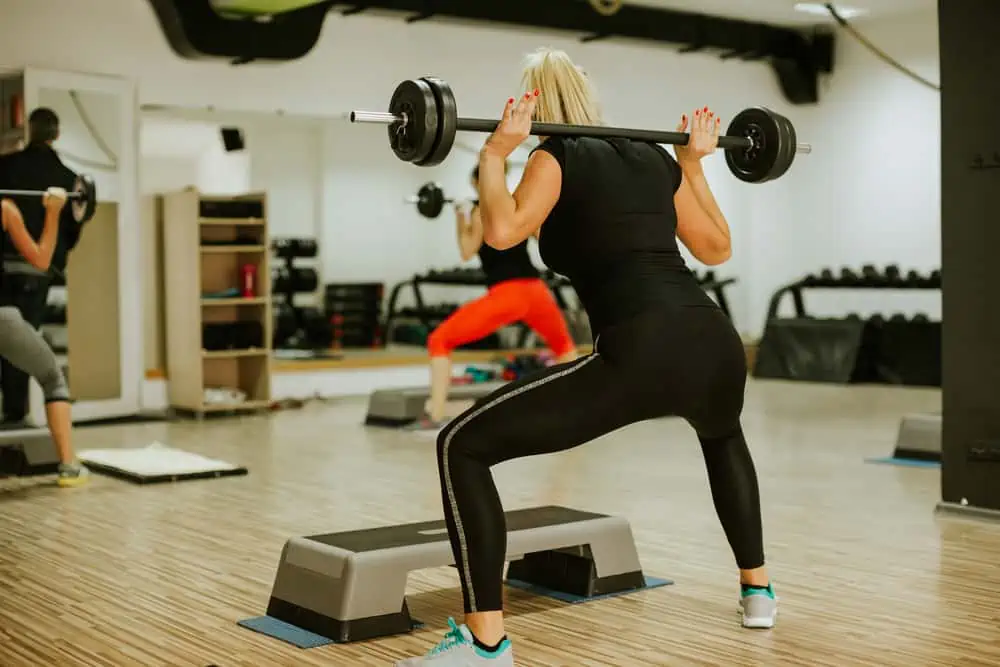

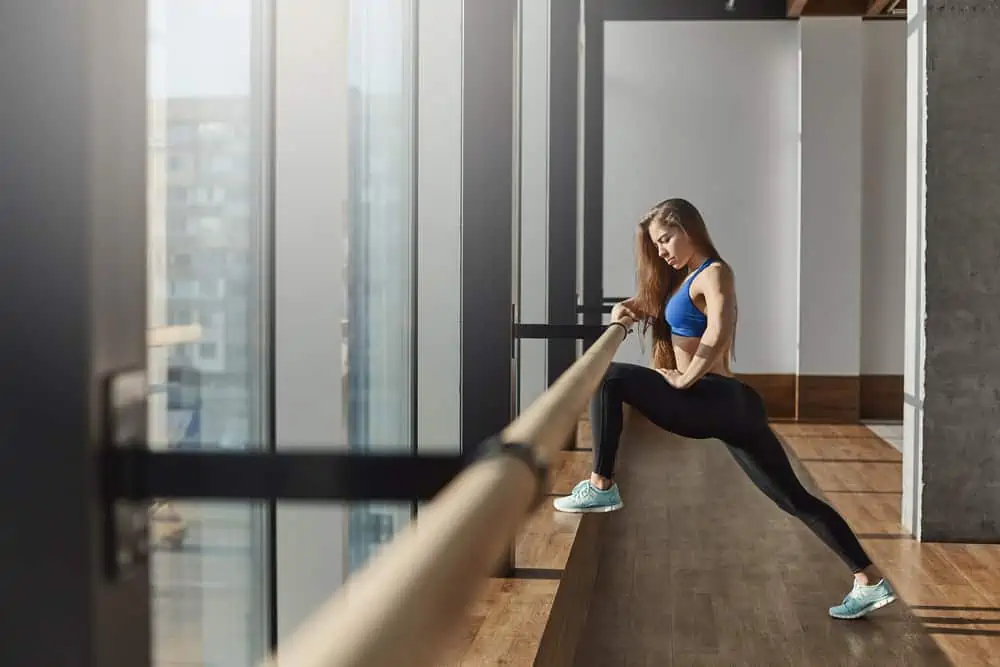

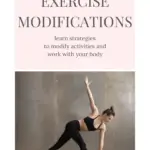


I think modifications are necessary for most especially those with muscular imbalances and other ailments.
Good post.
Absolutely, thanks for reading!
This was a great explanation of what to modify and why! My favorite has been using a band to help me until I can do an unassisted pull-up. Still working on that strength, but it helps me to make progress each day!
Thanks so much! Great modification to develop strength in a safe way.
I love this post. I’m going into exercise science in college this year. And one of the aspects I hope to learn more about is a modification. Using myself as an example. I was born with underdeveloped muscles in my wrist and chest. I have to use braces for my wrist much of the time. But I would like to strengthen them anyway. Now, bench pressed and push-ups are very difficult for me. I’m now sure what the mod would be for them so in college I’m hoping to learn. Also this past year I started suffering odd back spasms. I’ve injured my back before so I have to be careful of weight. But core exercises have really helped. I want to be able to work with people and kids, since that is a growing group, with particular needs. I love your article. I’ll be sharing this!
There’s always a modification (even if it’s a different exercise but targets the same muscle group) to take, so keep exploring and you’ll learn the ones that work for you. Injury prevention is a big focus in this blog so thanks so much for reading and stay tuned! Good luck with your courses this fall.
Great tips! As someone with rheumatoid arthritis (and permanent damage to joints from the RA), modifications are soooo necessary for me.
Thanks so much for reading and commenting. It’s so important to protect your joints, great job seeking out alternatives that work for you!